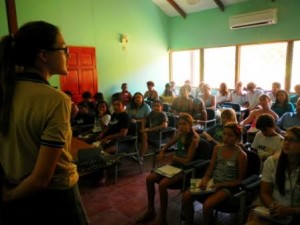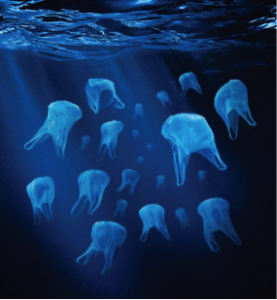Hot, dry air whips in through the open windows of the speeding car, while fields of white expand past both sides of the highway. On the radio, another Blues song plays, and the histories of these fields come to life.
The Blues grew out of these cotton fields of the Mississippi Delta. As a means of resistance against the brutality they faced, African slaves would sing their broken histories and chant their pain. Here, in Clarksdale, Mississippi– known as the birthplace of the Blues– these legacies of oppression and resistance are very much alive. Every year, tourists flock to Clarksdale to celebrate the history of the Blues, enjoy the community’s endless hospitality, and taste its Southern cuisine. Yet, over 40 percent of the community lives below the US poverty line. Breaking down this statistic, nearly half of Clarksdale’s black residents live in poverty, compared to just over 10 percent of white residents.
Soon, the fields recede to the white-picket fences and mansions which line the grounds of the country club and golf course. A few miles further into central Clarksdale, families living in small, dilapidated wooden houses can barely afford electricity. Driving into Clarksdale, the divides between rich and poor, white and black, are obvious.
While it’s easy for some to harbor on Clarksdale’s struggles, Chandra Williams sees the city in a different way: “This could be a healing mecca,” she says confidently. Chandra is the visionary director of the newly formed Crossroads Cultural Arts Center (CCAC). Although Chandra recently moved to Clarksdale for the position, she has called Mississippi home for the past 15 years. As a talented artist and educator, she is passionate about using the arts as a force for healing communities and individuals. Her business card reads “Teacher of Transformation”.
Before her position at the CCAC, Chandra taught art for nearly a decade through the Brilliant Easel Art School, which she founded. Through the school, Chandra worked with Mississippi public schools and mental health facilities to empower individuals, primarily youth, through the arts. Chandra sees art as a way for individuals to connect with themselves, their cultures, and their natural world. In addition to her degrees in drawing, printmaking, and education in informal settings, Chandra has a certification through the Audubon Society in wetlands education. She uses these experiences to ground her work in transforming individuals and communities, and hopes to continue to do the same through the CCAC.
From the outside, the CCAC looks like an uninhabited warehouse. It fits right into the rest of town where run-down buildings are supposed to add to Clarksdale’s charm. But on the inside, the CCAC is an arena of endless potential, with wide-open rooms, a stage, and beautifully painted murals hiding behind every door. Chandra dreams of making the CCAC a space where people can heal through arts rooted in history, culture, and community.
Specifically, Chandra wants to use the CCAC to transform the way black Americans see themselves and their culture. “We’re suffering from an identity crisis,” she explains as she tells the story of a young man she knew who committed a crime and served time in prison, just because he thought that was the only way he could be a rapper.
One of Chandra’s guiding life philosophies is that art creates reality. “Art is made for our senses. The image or sound that we sense creates a thought in our mind, and that thought drives what we think is reality,” she says. Right now, one of the dominant realities being created by art, specifically music, links young black men to crime and violence. “The black image needs to be changed for ourselves, for everyone, especially for black boys,” Chandra explains, “Lives are depending on it.” Here, in Clarksdale, where violent crime rates are more than double the US average, her message rings clear.
To Chandra, the natural environment plays an essential role in restoring identity and grounding the arts, especially in the rural community of Clarksdale. “In society, there’s inequality, but in nature, everyone is equally powerful,” she says. “But before I came to Mississippi at 22 years old, I had never seen the uninterrupted earth.”
To prove her point, she eagerly shares another one of her many stories. While teaching at an alternative school, a group of her students thought she was “cool” because she grew up in the urban cultures of Chicago and St. Louis. But when she finally did step into the Mississippi woods for the first time, she was scared. “What’s cool is to be safe on the earth,” she said to the kids. Even though they didn’t grow up in city streets, they had other valuable gifts from growing up in a rural community. They could do things like hunt, grow food, and be comfortable in the natural world. For the first time, these black youth growing up in rural Mississippi realized that what they had was powerful.
“It’s like a bird in a cage versus a bird in a tree. There is so much more a bird can do to transform into its greatest self when it can grow in its natural environment,” she explains. “We need to return to our natural selves to get away from this social environment that has imposed so many limiting ideas about who we are.”
Chandra believes nature provides methods for change that she wants to explore through the CCAC. Many people try to change society through protests and changing legislation, but those methods often focus on problems rather than solutions. “They involve opposition, and such, we end up putting our energy into things that we don’t want rather than creating what we do want,” she says. “But there are natural ways of change that don’t require the approval or resources of an institution.”
To her, one of these natural methods of change is through art. Not only is art inspired by experiences with the natural world– whether that be the woods or city streets– it also gives power to individuals to create reality. Even though a lot of artwork today is controlled by the entertainment and music industries, individuals can create and distribute artwork freely– and with innovations like the internet, sharing art is easier now than ever before. Within a small town such as Clarksdale, the potential for sending a widespread message through artwork is even stronger.
Through the CCAC, Chandra hopes to reframe black identity by telling the history of African and African-American culture in Clarksdale. She wants to highlight the roots of the Blues, which are inspired by the descendants of the Fulani people of West Africa who, according to her, “used the Blues to sing their family trees.” She envisions a space for people to create art to reconnect to their culture by creating black American forms of art, such as bottle trees and one-string guitars. It is a program she hopes will inspire black youth in Clarksdale to connect with themselves, their gifts, and their natural environment.
Through this work, Chandra hopes that the community of Clarksdale can begin to recognize its strength as a predominately black, rural community with a deep history connected to cultures across the globe. Chandra hopes that through the CCAC, she can inspire individuals to transform into their greatest selves so that they, together, can build a stronger community. Not only can the work of the CCAC work to reinspire Clarksdale, but the message can spread to the rest of Mississippi and beyond. Through her vision and the CCAC, Chandra holds strongly onto one belief: “Mississippi can change America.”














